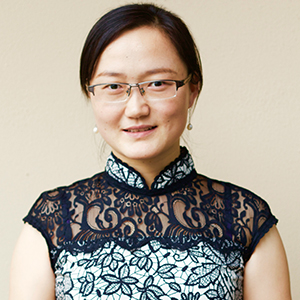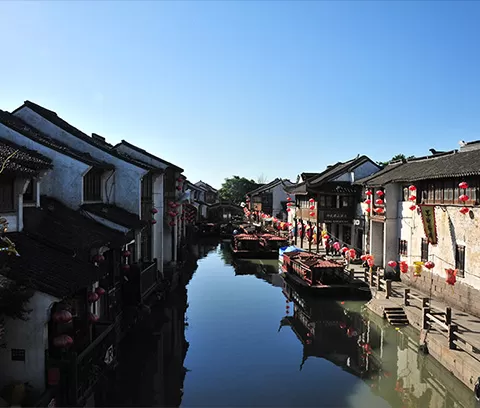Classical Gardens of Suzhou, UNESCO World Heritage Site
Classical Chinese garden design seek to recreate natural landscapes, which can be seen in the four gardens in the historic city of Suzhou. They are acknowledged as masterpieces of the genre. Built between the 11th and 19th century, the gardens reflect the importance of natural beauty in Chinese culture.
Introduction
Suzhou in China’s eastern Jiangsu Province is a historic city with a fame that travels far and wide, known for its picturesque landscape and elegant gardens in the world. There is a saying that goes like this in China, “The gardens in the lower region of the Yangtze River top those found elsewhere in China, and the gardens in Suzhou excel those found in the lower region of the Yangtze River.” According to available statistics, there are nearly 200 gardens of different sizes in Suzhou, among which the Great Wave Pavilion, the Lion Grove Garden, the Humble Administrator’s Garden and the Lingering Garden are the most famous, representing the artistic styles of the Song (960-127 AD), Yuan (1271-1368 AD), Ming (1368-1644 AD) and Qing (1644-1911 AD) dynasties respectively. Also, the Master of the Nets Garden is also well acclaimed among the people.
The Great Wave Pavilion located at southern Suzhou is the oldest garden in Suzhou, with its original construction dating back to the Qingli Period of the Northern Song Dynasty (1041-1048 AD). At the beginning of the Southern Song Dynasty (the beginning of the 12th century), it once served as the home of Han Shizhong, a celebrated general in the past. The artistic design of the Great Wave Pavilion stands out unparalleled among all the gardens in Suzhou, with a green pond outside its entrance. Inside the garden stones and rocks are dominant there. Entering the garden, you will see a mound in front of you where the Great Wave Pavilion is located. At the foot of the mount there is an excavated pool that is connected with the mound by a winding corridor. Mingdao Hall to the southeast of the rockery is the main building of this garden. Other structures inside the garden include the Memorial Temple of the Five Hundred Saints, Kanshan Tower, Cuilinglong Pavilion, Yangzhi Pavilion and Imperial Stele Pavilion.
The Lion Grove Garden located at northeastern Suzhou was built in the 2nd year of the Zhizheng Period of the Yuan Dynasty (1342 AD). The garden is given this name for the reason that the rockery peaks in the garden resemble the shape of a lion. The whole garden is in the shape of a rectangle, with an area of about 15 hectares. It abounds in stones, rocks and lakes, those are exquisite and delicate. The buildings are well arranged in the garden, including main structures such as Yanyu Hall, Jianshan Tower, Peipu Pavilion and Wenmei Pavilion. The garden has a clear theme with all the landscapes well scattered around inside it. The rocks and caverns are uniquely designed, exhibiting unique charm throughout.
The Lingering Garden located outside the Chang Gate of Suzhou was built in the Ming Dynasty. In the Qing Dynasty, it was given the name Hanbi Mountain Villa, commonly referred to as the Garden of Family Liu, and was later renamed the Lingering Garden. With an area of about 50 hectares, it features rocks and lakes in its central area are known to be the very best part of it. Main structures include Hanbishan Room, Mingse Tower, Yuancui Pavilion, Quxi Mansion, Qingfeng Pool Pavilion. The Lingering Garden outnumbers others in its large amount of buildings, and its outstanding structure show the superb building techniques and wisdom of ancient architects.
The Humble Administrator’s Garden built during the Zhengde Period of the Ming Dynasty (1506-1521 AD) inside the Lou Gate is the largest garden in Suzhou, which is said to be representative of Suzhou gardens. The design is similar to gardens in the late Qing Dynasty (the beginning of the 20th century), with its area of 62 hectares. Lakes and pools are the dominant theme of its garden design, accounting for a fifth of the land area of the garden. The pavilions, terraces and halls of various kinds are built next to the lakes, including structures such as Yuanxiang Hall, Xuexiang Yunwei Pavilion, Daishuang Pavilion, Liuting Pavilion, Eighteen Datura Pavilion and Thirty Six Mandarin Duck Pavilion. The buildings in the garden are well arranged, have a unique design and an elegant yet simple structure.
The Master of the Nets Garden located at southeastern Suzhou was built in the Southern Song Dynasty (1127-1279 AD), was known as a secluded place for fishing in the past. During the Qianlong Period of the Qing Dynasty (1736-1796 AD), it was rebuilt and given today’s name known as the Master of the Nets Garden, which still carries the implications of its old name. With only half a hectare, it is the smallest among all the gardens in Suzhou, with structures such as Conggui Pavilion, Zhuoying Water Pavilion, Kansong Duhua Pavilion and Dianchun Room. All the pavilions, terraces and halls inside the garden are built next to the water, and lakes and pools are found throughout the garden. The architectures are well arranged, the exquisite design exhibiting hints of the architectural style of the Ming Dynasty.
In the classical gardens of Suzhou, unique artistic garden design is employed to bring out the best of the limited space, is the perfect combination of rocks, lakes, pavilions, terraces and halls. The classical gardens of Suzhou have a cultural richness that is exemplified by artistic garden design, unique architectural style as well as masterpieces left by the men of letters.
Cultural Heritages
The archetype of the classical gardens of Suzhou is said to be the garden of the King of Wu Kingdom during the Autumn and Spring Period in the 6th century BC. According to historical records, the private gardens date back to as early as in the Eastern Jin Dynasty (4th century) when Pijiang Garden was first built. Since then, there witnessed a mushrooming of gardens in the successive dynasties, among which are famous across China. In the Ming and Qing dynasties, Suzhou became the most bustling area in China, with private gardens scattered in and outside the ancient city wall. Between the 16th and 18th century witnessed the flourishing period of the gardens, with as many as over 200 gardens in Suzhou. Today, there are dozens of existing well-preserved gardens. For these reasons, Suzhou has been long hailed as a paradise on earth.
The Humble Administrator’s Garden, the Lingering Garden, the Master of the Nets Garden and the Mountain Villa with Embracing Beauty, which are considered representative of classical gardens of Suzhou. They are shining examples of the classical gardens of Suzhou with their rich aesthetic value, exquisite design and fine arts.
Artistic Implications of the Landscape
Throughout history, the garden design has always been intertwined with Chinese literature and the art of painting exemplified by rich implications of landscape painting by men of letters of the Tang and Song dynasties. For this reason, the classical gardens of Suzhou are hailed as a shinny example for the mimicking of mountain and water landscapes. Over the long process of development, Chinese gardens have evolved into two major types, namely the imperial garden and the private garden. The former is found concentrated in Beijing and its surrounding areas while the latter has its wide presence in Suzhou. The political, economic, cultural, natural and geographic differences between them are distinctive when considering their scale, structure, size, style and color. Generally, imperial gardens feature grandness, solemnity, magnificence and symmetrical structure while private gardens are characterized by delicateness, exquisiteness, elegance, free structure and rich artistic implications of the landscape. The focus of the latter is more on the perfect combination of culture and art. The imperial gardens in their late development stage are found to bear the traces of the beautiful landscapes due to their ambience creation, design, building techniques and cultural implications, which are unique to private gardens.
Perfect Housing Conditions and Living Environment
The classical gardens of Suzhou features a perfect combination of homes and gardens, creating an environment where people can live, appreciate landscapes and undertake recreational activities simultaneously. This architectural structure was a response to societal conditions since the city was too populated to accommodate natural landscapes. As a result, the local people sought to beautify and ameliorate their environment in an attempt to harmonize with nature. The Humble Administrator’s Garden, the Lingering Garden, the Master of the Nets Garden and the Mountain Villa with Embracing Beauty are characterized by architectures of various types and good preservation showing every aspect of Suzhou gardens, including structure, shape, style and color as well as adornment, furniture and decorations. They are said to be representative works of the private architectures of the Ming and Qing dynasties (14th to early 20th century) in the lower reaches of the Yangtze River. In a sense, they embody the highly civilized living environment in the lower reaches of the Yangtze River in the past, and used to exert influence on the architectural style of cities in the area. Since then, other private architectures changed in design, structure, aesthetics and building technique.
Rich Social and Cultural Implications
The classical gardens of Suzhou are unparalleled for they are not only the products of history and culture but also the carrier of traditional Chinese philosophies, exemplified by the names, plaques, couplets, rocks created by the men of letters, inscriptions and adornments found in the pavilions, terraces and halls. The trees, flowers and overlapping rocks are said to be rich in spiritual value, serving not only as exquisite adornments but also the symbol of cultural, philosophical and scientific value. In this sense, they are rich in both material and spiritual implications. Some embody the philosophies of Confucianism, Taoism and Buddhism, some enlighten people on the philosophy of life and moral standards, and some are integrated with Chinese literature to give more cultural connections to the garden to offer people aesthetic and spiritual enjoyment during their stay. In the gardens there preserve collections of the works by celebrated calligraphers that are said to be high in aesthetic value. As compounds of homes and gardens, they serve as the physical evidence for the study of the ancient customs in the lower reaches of the Yangtze River, offering a glimpse of the bygone lifestyle and daily routines of the local people.
GREAT FAMILY CHINA TOUR
JULY 2024 We wanted to thank Grace at China Culture tour for organizing a great tour of China. We enjoyed our Beijing - Xian-Chengdu -Guilin -Yangshuo - Shanghai trip. Our local guides Bruce in Beijing, Susan in Xian, Jane in Chengdu, Mike in Guilin and Mary in Shanghai took care of us…read more details »
Teng Han L from SINGAPORE
Ready to Create a Unique Dream Travel?

